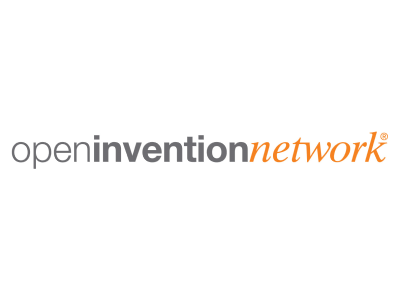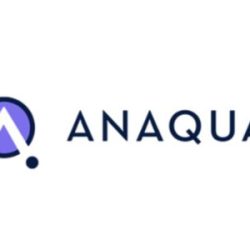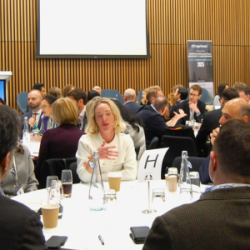The Fintech Open Source Foundation (FINOS) conducted a survey in 2022. The results of its latest State of Open Source in Financial Services Survey show that financial services companies, known for their conservative approach to software development, now largely embrace open-source software.
Historically, financial services firms have relied on Linux and open source software for point solutions – communications networks, ATM networks, and high-frequency trading, among others. In the late-2000’s, the world’s stock exchanges moved to Linux platforms.
The transformation that has occurred since then has been sweeping – the world’s money managers are now creating as well as using open source software (OSS). FINOS counted the number of contributions to open source projects hosted on GitHub by looking at the number of contributions coming from users with email addresses associated with a financial services company.
The report noted 536,000 changes by financial services companies to open source projects on GitHub, which is one of the largest hosts of source code, in 2022. That is 24% more contributions than in 2021. By sharing core open source innovations, financial services firms can concentrate their software development and integration higher in the software stack, providing strong differentiation and value generation.
Historically, patent litigation was low in the financial services industry
Over the course of the last two decades, the pace of patent litigation was primarily driven by forces in the information technology and telecommunications industries. For the most part, we saw patent disputes between corporate entities. Financial and banking industry patent lawsuits were less frequent by comparison.
With the growth and proliferation of FinTech, the landscape today is infinitely more dynamic and complex. Banks and financial services companies are builders and buyers of new FinTech capabilities. Technology companies have entered the industry with new capabilities that enabled consumers and businesses to manage their money and investments in ways previously unimagined. With the entrance of technology companies, an industry with a heritage of intellectual property disputes, banks are at a higher risk for patent lawsuits.
On top of this, PAEs, also known as patent trolls, have become more aggressive in pursuing patent infringement lawsuits against the financial and banking industry.
Financial services open source patent litigation is on the rise
According to research from RPX, the world’s leading defensive patent acquisition network, from 2020-2021, financial services industry patent litigation grew by 100%, almost three times more than the next closest sector.
Unified Patents, an international membership organization that seeks to improve patent quality and deter unsubstantiated or invalid patent assertions in defined technology sectors, found that in 2022, the pace of open source-based patent litigation has grown by more than 200%.
Open Invention Network, the largest patent non-aggression community in history, recently published a report examining FinTech and open source-related patent litigation by PAEs. The findings indicate an unprecedented wave of patent actions related to FinTech and open source.
Authentication and token authentication appeared to be the most active technology area targeted by PAEs. They also brought suits in areas concerning Remote Deposit Capture (RDC), Secure Transactions, and Financial Document Access / Storage and Payment Cards / Mobile Transactions. These technologies are the keys to enabling customers the ability to conduct trusted remote and mobile banking, as well as financial transactions and asset management.
How to address PAE activities at the intersection of FinTech
There are some steps that financial services companies should examine as they look to lower the growing patent risk presented by PAEs.
Open Invention Network is a community of more than 3,700 organizations. It leverages a free license to require participant companies to forebear litigation and cross-license patents in the core of Linux and adjacent OSS. Given that almost all financial services and FinTech platforms either run on open source software, or contain open source components, joining the group is a good first step in reducing patent risk. Its work to stifle patent trolls for its community is another strong reason to join. Banks such as Barclays, Royal Bank of Canada, Sumitomo Mitsui, U.S. Bank, Toronto Dominion Bank, Truist, and The Bank of Nova Scotia are all community members, as are financial services companies such as ADP, Ally Financial, Ant Group, Block (formerly Square), Broadridge, Equifax, Rakuten, Stripe, and TransUnion. The OIN community also contains insurance providers such as Anthem, Nationwide, Prudential, and Transamerica.
Unified Patents focuses broadly in “Zones” with substantial patent activity by Standards Essential Patents (SEP) holders or PAEs. Unified Patents counters the patent activity in these Zones with tools which may include analytics, prior art, invalidity contests, patentability analysis, administrative patent review (PTAB), amicus briefs, economic surveys, and essentiality studies. The organization works independently of its members to achieve its deterrence goals. Small members join for free, while larger ones pay modest annual fees.
There are other groups, like the Crypto Open Patent Alliance. COPA is a non-profit focused on keeping patents from becoming barriers to innovation in the crypto space. Block (formerly Square), the payments company with a penchant for crypto and open-source development, launched the membership organization.
Financial service organizations will also need to examine their own human resources and patent portfolios with an eye toward deterrence and risk mitigation and begin to invest in resources that increase their intellectual property sophistication.
It’s a tremendously exciting time for the financial services industry. FinTech has delivered many benefits and promises a great deal more. That said, the industry also has an opportunity to adopt strategies for lowering patent risk in an increasingly litigious environment.
You may also like…
Enhanced by AI, comprehensive IP management systems are the superior choice
Currently, many organizations are attempting to address their diverse intellectual property (IP) needs by implementing...
The semaglutide saga continues: navigating generic entry and reinforcing patent strategies in Canada
In our July 2025 analysis, “The Semaglutide Story: Highlighting the Need to Maintain Patent Protection in Canada,” we...
Smart AI automation in IP management
Just like websites, smartphones, and open-source software dramatically changed our modern era, artificial intelligence...














